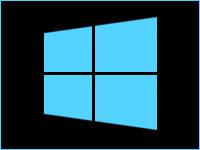
Former Microsoft executive Steven Sinofsky, who shocked the high-tech industry when he abruptly parted ways with the company shortly after Windows 8 was launched, has joined venture capital firm Andreessen Horowitz as a board partner.
Sinofsky, a 23-year veteran at Redmond, led the creation of Windows 7 and 8 and six versions of Microsoft Office. He became president of the Windows division in 2009 but left about three weeks after Windows 8 was launched in November 2012 amid rumors that his relationship with other Microsoft executives, which had long been tense, had been worsened by the poor reception Windows 8 received.
Sinofsky will represent Andreessen Horowitz on the boards of companies in their portfolio as needed, he said on Thursday.
Sinofsky the Man
Widely tipped to be the next head of the software giant, Sinofsky was noted for his abrasive manner, which reportedly led colleagues to nickname his approach “Sinofskyization.”
“I met with Steven Sinofsky several times and had hallway conversations with him, and he was very curt and condescending in his manner,” Roger Kay, principal analyst at Endpoint Technologies Associates, told the E-Commerce Times. “I can see how people could have trouble with that.”
On the other hand, “driving a large software team requires you really understand the code and can get in there and fix something you see isn’t quite right, and if you were that smart you might be arrogant too,” Kay added.
Sinofsky was considered one of the best product managers at Microsoft, asserted Rob Enderle, principal at the Enderle Group.
Strengths and Weaknesses
Sinofsky “was successful at driving large teams to bring software in on schedule and on spec,” Kay stated. “That’s a hard job, and he was able to do it, particularly with [Microsoft] Office, and that’s why he was being talked about a being a potential future leader for the company — he did have skill at driving his teams.”
However, Windows 8 was neither a mobile OS nor a legacy OS and did not do a good job on either desktops or tablets, Kay said.
On top of that, it evoked conflict among Microsoft’s OEM partners over who was going to supply the hardware for the OS, resulting in “total disaster,” Kay explained. “Sinofsky has a lot of responsibility for the way it was conceived and executed, and his skill at making large teams produce on time relatively bug-free didn’t help him when it came to positioning the product, or with his partners in the ecosystem.”
The VC Business
It’s possible that Sinofsky might fare well as a venture capitalist.
“I don’t think that, because he has issues getting along with colleagues and perhaps has problems with product positioning, he couldn’t be a decent venture capitalist,” Kay suggested
Indeed, since Sinofsky’s strength was bringing in product on time and his weakness was collaboration, he’d be “very good in helping a company organize itself into a functional structure, and that’s basically what a VC does,” Enderle told the E-Commerce Times.
In addition to being a board member at Andreessen Horowitz, Sinofsky will continue to be executive in residence at Harvard University, where he has taught in 1999.
He declined to provide further details.
Windows Without Steve
It is difficult to see just how Sinofsky’s departure has affected, or will affect, Microsoft’s Windows division.
“They just went through a reorganization, and we don’t really know the impact of those changes yet,” Michael Cherry, senior analyst at Directions on Microsoft, told the E-Commerce Times.
Sinofsky’s legacy may continue through Julie Larson-Green, who now heads the Windows hardware and software divisions and “is philosophically tightly aligned with him,” Cherry pointed out.
With that and the amount of planning that was done for the next release of Windows 8 prior to Sinofsky’s departure,” Cherry concluded, “there won’t really be that much change reflected in Windows 8.1.”












































Social Media
See all Social Media